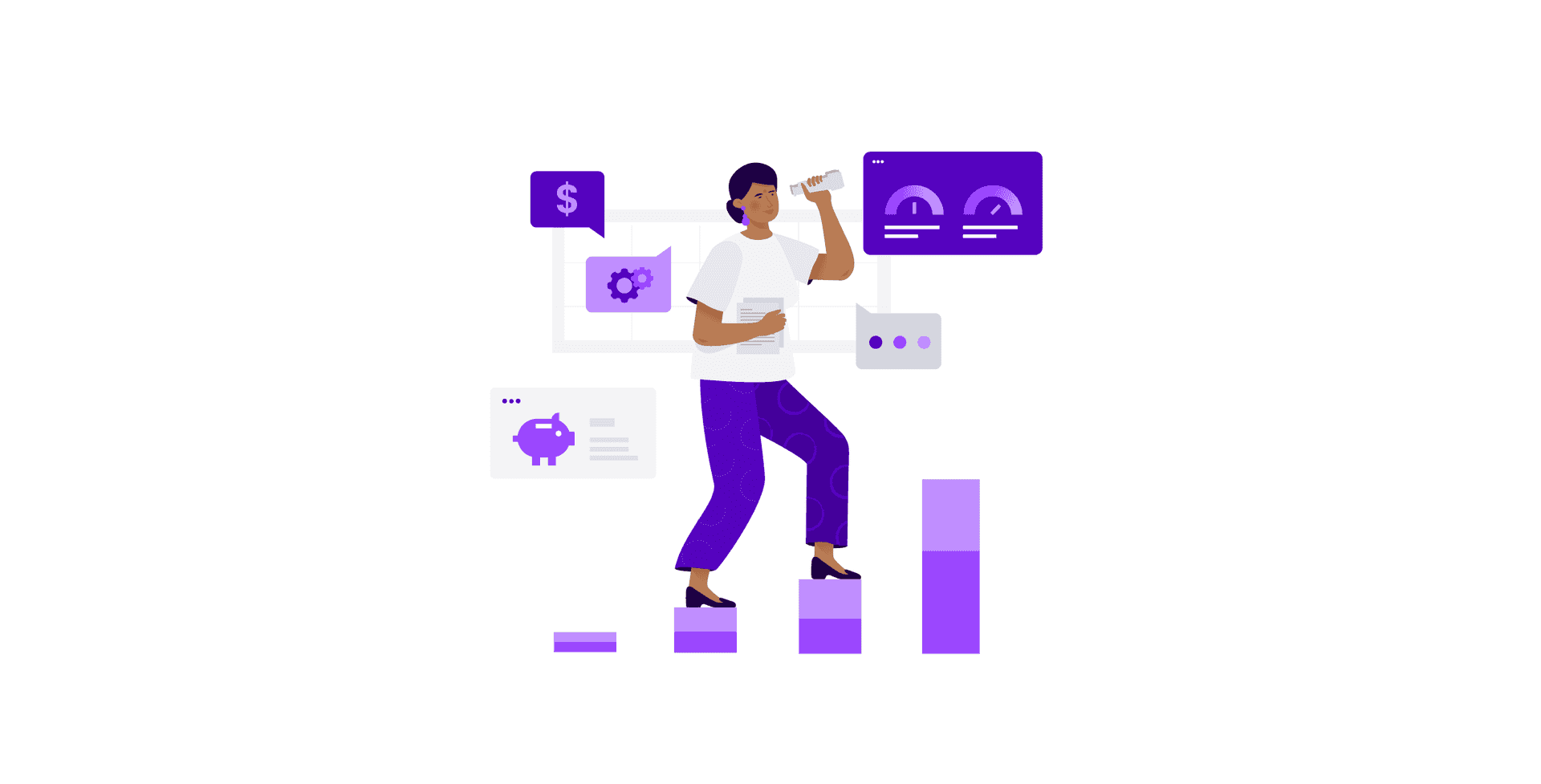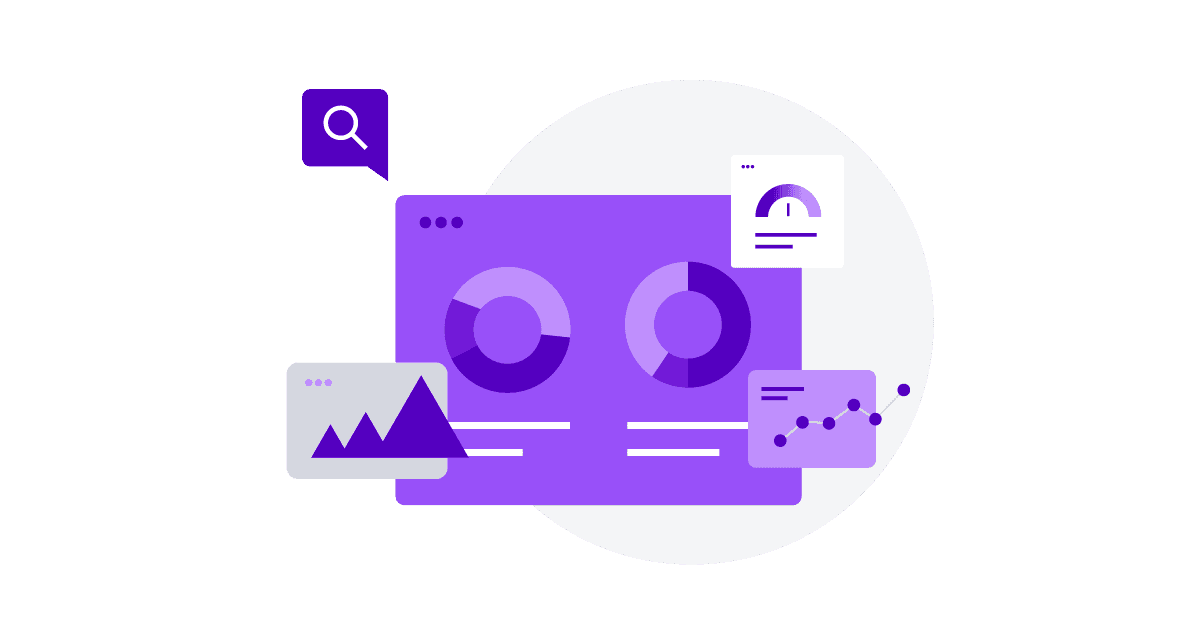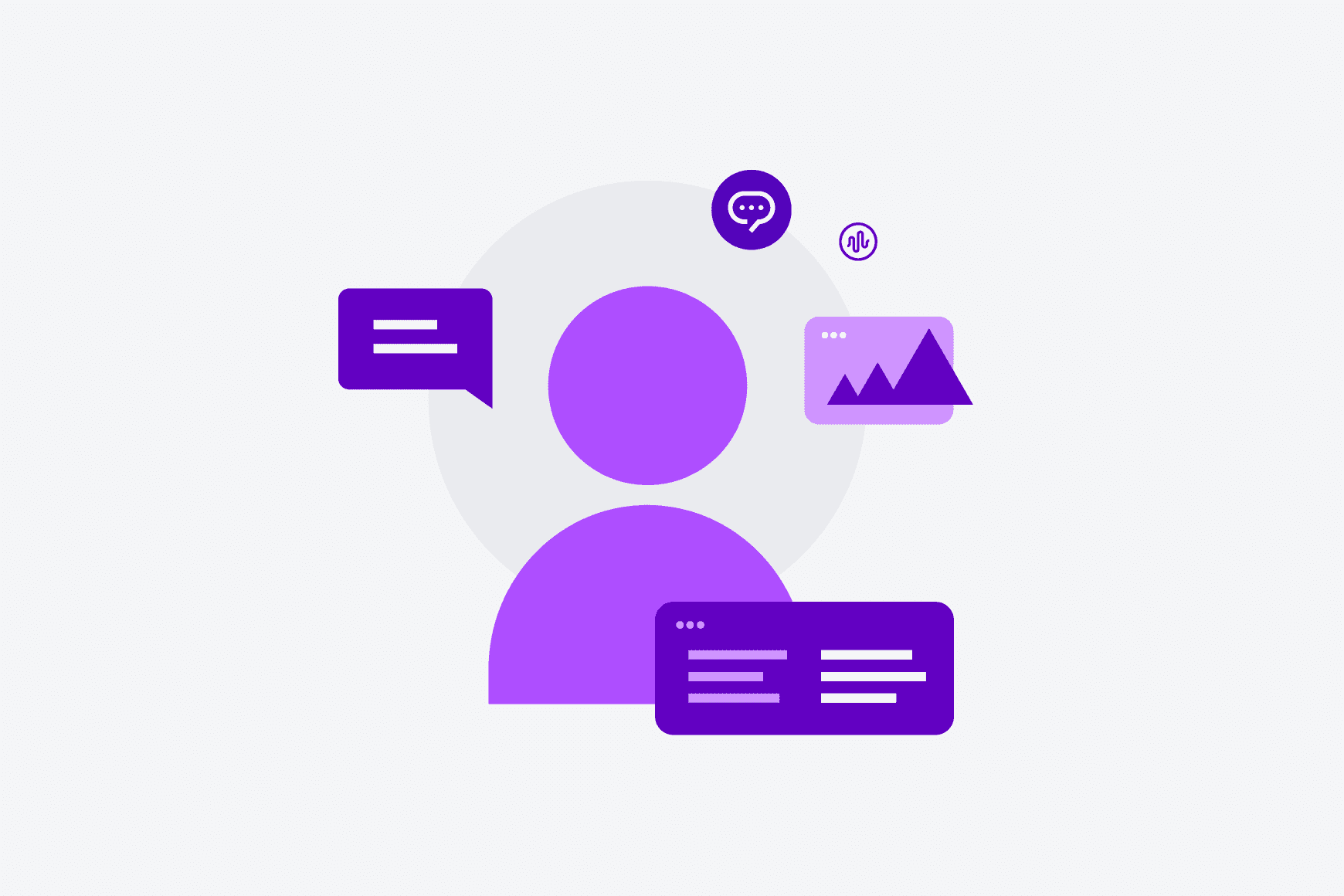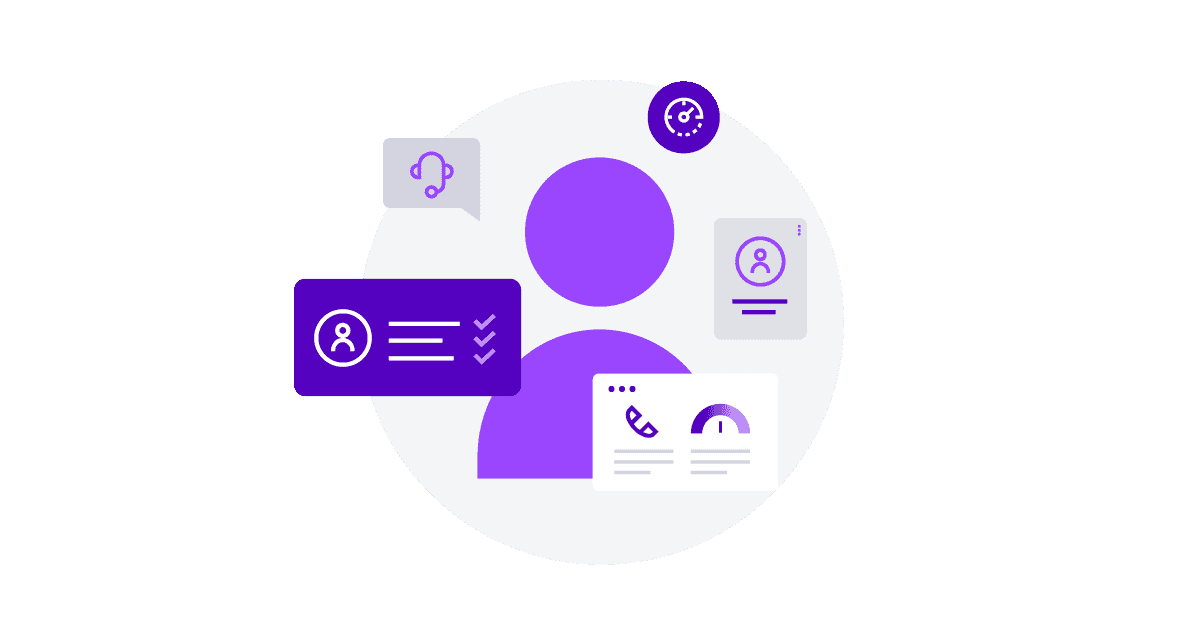The metrics and technology you need to cut costs and improve customer experience

By Taylor Johnson
0 min read

Boost CX and operational efficiency with the right set of metrics and smart additions to your contact center tech stack
By now, many contact center agents have settled into their new remote work routines, and research shows that they may be in it for the long haul. According to Gartner, 82% of companies will allow employees to work remotely at least some of the time, while nearly 50% of companies plan to make remote work permanent. With these trends in mind, customer support/service must continue to focus on optimizing their agents’ work-from-home (WFH) environment and operational processes.
Meanwhile, a broad economic recovery remains uncertain. As the primary drivers of cost-cutting initiatives in the contact center, customer support/service leaders must continue to focus on costs while maintaining a clear vision (or establishing this clear vision if one doesn’t yet exist) to support WFH. Customer experience (CX) leaders, while not the primary stakeholders in charge of reducing costs, must partner with their customer support/service counterparts to ensure CX is maintained and is driving return on investment (ROI) to help support the business’s bottom line.
For this partnership to be successful, two main things need to happen. First, customer support/service and CX leaders must align on key metrics to ensure WFH contact center agents are performing efficiently and providing better customer experiences. Second, they must identify and adopt the right technologies that can help cut costs and create new efficiencies, without sacrificing CX.

5 contact center KPIs to align on
While customer support/service leaders and CX leaders both have metrics that they are uniquely responsible for, there are some key performance indicators (KPIs) that both organizations should align on to support mutual cost-cutting and CX initiatives in the contact center:
1. First call resolution.
First call resolution (FCR) measures the percentage of all calls in which the caller’s issues were resolved on the first attempt, without the agent needing to escalate the call, transfer the call or call the customer back. It is one of the most commonly analyzed KPIs in the contact center industry and frequently used to measure agent efficiency. A high FCR means agents spend less time on the phone, which can have a significant positive impact on overall contact center costs. And, not surprisingly, a high FCR means customers are getting their issues resolved during the initial interaction, letting them spend more time enjoying your product or service and less time on the phone with agents troubleshooting issues.
2. Average hold time.
Average hold time measures the time a customer is on hold during a call with an agent. Leaving customers on hold for lengthy periods of time increases stress, hurts CX and will likely result in an abandoned call. A high average hold time also hurts average handle time and overall contact center efficiency, quickly driving up costs.
3. Abandonment rate.
Abandonment rate is the percentage of calls terminated between the IVR and the moment an agent answers the call. A high abandonment rate means, for example, your IVR is too complex or your queue wait times are too long. This results in a frustrating experience for customers who may be looking for urgent help and drives up costs for your business by making it harder to satisfy and retain customers. On the flip side, reducing abandonment rate could actually increase costs by putting more callers on the phone with agents. To truly reduce costs as it relates to abandonment rate, you must ensure customers have the option to self-serve through your IVR, which we cover in the section below. Here’s a more in-depth resource on what abandonment rate is and how to calculate it.
4. Cost per contact.
This is another key metric to measure when identifying areas of opportunity to reduce costs while improving CX. ICMI puts it simply: “cost per contact is the total annual operating expense of a contact center divided by the annual inbound contact volume of the contact center.” Multiple factors influence cost per contact, such as channel mix and agent productivity. In fact, according to ICMI, while agent productivity may be one of the leading factors people think of when they hear cost per contact, optimizing the mix of digital channels you offer customers can reduce cost per contact by 50% or more.
5. Service level.
Service level measures the accessibility of a company to its customers and is considered by many as the holy grail measurement of contact center performance and customer service quality. Service level is defined as the percentage of calls answered within a predefined threshold, for example, 20 seconds, but does not include time spent listening to phone greetings or in the IVR. Contact center managers often respond to low service levels by increasing agent headcount, improving service level and CX by allowing more agents to service more customers. However, this overstaffing often leads to a significant increase in costs. To reduce costs and provide a great CX, contact centers should optimize workforce management rather than increase the number of total agents available.
Note: to accurately evaluate a contact center’s performance, leaders need at least six months of both WFH and on-site data to draw conclusions and compare the two very different work environments.
Diagnosing what is impacting these metrics requires a 360° view of people, processes and technology. In many cases, it’s the technology that is failing to fully support the contact center agent.

5 key contact center technologies to adopt
Once your service/support and CX leaders have agreed upon the key foundational metrics they’ll use to reduce costs and improve CX, it’s time to dig into key technologies that can improve these metrics and reduce costs. Here are five additions to your tech stack you should consider right away:
1. Deploy cloud technology.
Cloud contact centers not only transform the way businesses interact and support their customers, they allow for a level of innovation not possible with traditional on-premises providers. Cloud contact centers are especially key in today’s environment where most of the contact center has transitioned to WFH.
The move to the cloud also benefits your business’s bottom line: modern cloud contact centers and on-premises solutions can be comparatively priced, but the real savings come from the elimination of hardware and maintenance costs that are all required for on-premises solutions. Not only are they more cost-efficient, they empower businesses to provide truly differentiated experiences by leveraging new capabilities that are easily enabled through the cloud. These capabilities can help optimize some of the key contact center metrics listed above, such as:
- Reducing cost per contact by offering an array of digital channels.
- Improving FCR by integration with tools like CRMs that provide agents with contextual customer information as soon as a call begins.
- Boosting service levels.
- Reducing costs by using workforce management tools to accurately forecast agent staffing needs, and more.
If you’re not using a cloud-native contact center platform, now is the time. While it may seem daunting to switch over, you may be able to move to the cloud in as little as 24 hours with minimum effort required to train your agents (the best cloud platforms are designed to be intuitive and easy to use).
2. Leverage AI and automation.
A Harvard Business Review study states, “The cost of a do-it-yourself transaction is measured in pennies, while the average cost of a live service interaction with an agent (phone, e-mail, or webchat) is more than $7 for a B2C company and more than $13 for a B2B company.” Intelligent automation tools, such as chatbots and virtual agents, can deliver human-like experiences to solve simple customer issues without the need for live-agent intervention, helping them resolve their issues faster and more efficiently. This automation eliminates manual tasks and streamlines business processes, creating cost-savings opportunities through improved productivity, and has a direct impact on key metrics above like increased service level, reduced cost per contact and a reduction in AHT.
3. Adopt omnichannel capabilities.
Adding omnichannel capabilities can reduce the number of time-consuming calls and result in a significant improvement in your voice metrics like service level and cost per contact. Omnichannel capabilities guide customers to alternative channels to reduce your costs and improve their experience by empowering them to find help in the channel or channels they prefer. Alternatively, tools like bots can handle common queries before the customer is transferred to an agent, reducing the time agents must spend diagnosing the customer’s problem and increasing the chances of the problem being resolved on the first call. Companies with strong omnichannel support engagement note a:
- 9.5% annual increase in revenue compared to 3.5% achieved by businesses without omnichannel support.
- 7.5% year-over-year decrease in cost per contact, compared to a 0.2% year-over-year decrease for weak omnichannel capable companies.
4. Streamline your IVR.
Your IVR is a great way to reduce costs and improve contact center SLAs by allowing callers to self-serve, reducing the time your agents are spent tied up on the phone. It also provides a fast, frictionless experience for customers who want to do things like check on the status of an order or initiate a refill of their prescription. Your IVR can also act as an efficient means of capturing key customer data, whether through database dips or manual customer input. More data upfront means callers are routed to the agent best suited to address their needs, ensuring they’re matched with someone who can resolve their issue on the first call. Providing agents with contextual customer data early also has a positive impact on AHT, requiring them to spend less time searching for this information in their systems and more time servicing the customer.
5. Make an impact through tight integrations.
Integrations with the tools you and your teams work in every day is another fundamental benefit of a cloud contact center and a key capability for service/support and CX leaders to align on. Enable your agents to respond to rapidly-changing contact center conditions by receiving real-time alerts directly in your messaging tools of choice, such as Slack or Microsoft Teams. Give them access to current information, across all systems, with tightly integrated CRM, help desk and ticketing solutions. Increasing the speed and accuracy of agent-to-customer responses will improve first call resolution (FCR) rates, reduce costs and accelerate your workflows. Not only that, it will enable you to provide more efficient, personalized experiences for customers.
By aligning on the right set of metrics and technologies, customer support/service and CX leaders can not only work together to slash contact center costs and improve the CX, but they can also elevate their organizations to ensure they continue to receive the respect—and funding—they deserve.
Talkdesk can help you achieve your cost-cutting and CX goals by equipping you with the technology, strategies and even staff needed to succeed. We believe in your success. Contact us to learn more.








